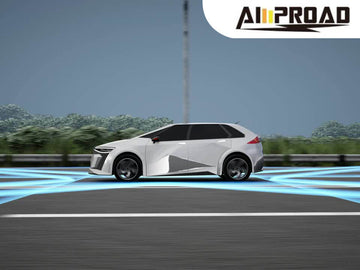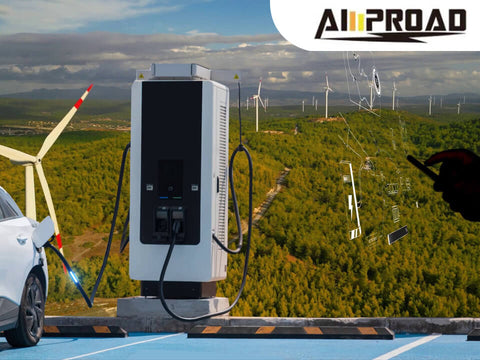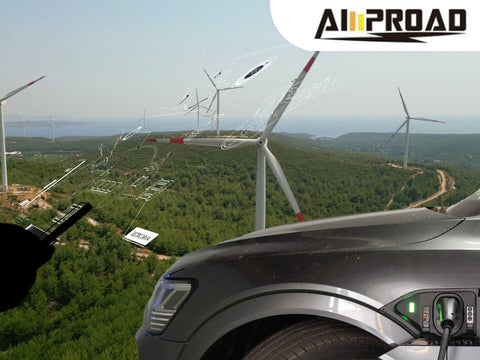
Thinking about installing a home EV charger? Choosing the right location is crucial for convenience and safety. Let's explore key factors to consider. From assessing accessibility for easy use to ensuring electrical compatibility and implementing safety measures, this guide will help you navigate the process with confidence. Whether it's finding the perfect spot in your garage or determining the optimal distance from your electrical panel, we'll cover everything you need to know to make an informed decision. Let's dive in and ensure your home EV charging setup is efficient, safe, and hassle-free.
How Can I Assess the Accessibility for My Home EV Charger?
Installing a home EV charger requires careful consideration of accessibility factors to ensure convenience and ease of use. Here's how you can assess the accessibility of your chosen location:
Is the Parking Location Easily Accessible from Your Usual Spot?
When selecting a spot for your home EV charger, consider the proximity to your usual parking location. Ideally, the charger should be situated within easy reach of where you typically park your car in your garage or driveway. This ensures minimal effort in accessing the charger, especially during inclement weather or when in a hurry.
Does the Charger's Cable Length Comfortably Reach Your Car without Tension?
Check the length of the charger cable to ensure it can comfortably reach your vehicle without causing tension or strain. Standard Level 2 charger typically comes with cable ranging from 18 to 25 feet. Choosing a location that allows the cable to reach your car without excessive stretching or maneuvering ensures convenience and prevents potential damage to the cable.
Are There Any Obstructions Hindering Access to the Charging Port?
Examine the chosen location for any obstructions that may hinder access to the charging port on your car. Avoid areas with shelves, workbenches, or other obstacles that could make plugging and unplugging the charger challenging. Selecting a clear and unobstructed space ensures seamless charging experiences without the need for awkward maneuvers or adjustments.
Assessing the accessibility of your chosen location is essential for optimizing the usability and convenience of your home EV charger. By considering factors such as parking location, cable length, and clearance from obstructions, you can ensure a hassle-free charging experience and make the most of your electric vehicle ownership.
What electrical considerations should I keep in mind when installing my home EV charger?
When installing a home EV charger, several electrical considerations are crucial to ensure safe and efficient operation:
How Close Is the Chosen Location to Your Home's Electrical Panel?
Proximity to your home's electrical panel is essential when determining the installation location for your EV charger. The closer the charger is to the electrical panel, the shorter the conduit needed to connect them. This translates to lower installation costs and potentially less disruption during installation.
Does Your Electrical Panel Have Sufficient Capacity for the Charger's Load?
It's crucial to assess whether your home's electrical panel has the capacity to handle the additional load of the EV charger. EVSE Level 2 chargers typically require higher electrical capacity compared to standard household appliances. Consulting a qualified electrician is recommended to evaluate your electrical panel's capacity and potentially recommend upgrades if needed. Upgrading your electrical panel ensures that it can safely accommodate the charging requirements of your EV without overloading the system.
Considering these electrical factors before installing your home EV charger helps ensure a smooth and trouble-free charging experience. By choosing a location close to your electrical panel and ensuring sufficient capacity, you can minimize installation costs, maximize safety, and optimize the performance of your Level 2 EV charger.
Are There any Safety and Protection Measures?
When it comes to ensuring the safety and protection of any location, it's crucial to consider various potential risks and take appropriate measures to mitigate them. In this section, we'll explore three important aspects: weather conditions, water hazards, and fire risks.
Is the location adequately protected from weather conditions?
Weather conditions can pose significant threats to any location, ranging from severe storms and high winds to extreme temperatures. Adequate protection measures should be in place to safeguard against these potential dangers. This may include reinforced structures, proper insulation, and appropriate ventilation systems to maintain a comfortable and safe environment even in the harshest weather conditions.
Are there any water splashes or excessive moisture risks?
Water hazards, such as flooding, leaks, or excessive moisture, can cause significant damage and create safety concerns. It's essential to assess the location's proximity to water sources, drainage systems, and potential areas where water could accumulate. Proper waterproofing, effective drainage systems, and regular maintenance can help prevent water-related incidents and ensure a dry, safe environment.
Are there any flammable materials or heat sources nearby?
Fire is a significant risk in any location, and it's crucial to identify and mitigate potential fire hazards. This includes assessing the presence of flammable materials, such as combustible liquids, gases, or materials that could easily ignite. Additionally, it's important to identify and control heat sources, such as electrical equipment, machinery, or open flames, to prevent accidental fires.
Looking for a charger that offers both convenience and peace of mind? The AMPRO IP67 Level 2 EV charger is a great option for home charging and even travel. It boasts a weatherproof rating of IP67, meaning it's dustproof and can withstand water immersion for up to 30 minutes at a depth of 1 meter. So, you can be confident it will handle the elements, whether you install it in your garage or take it on a road trip.
Implementing comprehensive safety measures is vital to protect people, property, and assets. Regular inspections, maintenance, and adherence to safety protocols can help identify and address potential risks before they escalate into dangerous situations. By taking proactive steps to ensure adequate protection from weather conditions, water hazards, and fire risks, we can create a safer and more secure environment for all.
Are There any Additional Factors to Consider?
When evaluating a location or setup, it's essential to consider various additional factors that can impact usability, functionality, and overall effectiveness. In this section, we'll explore two crucial aspects: recommended mounting height for ease of use and the availability of smart features for remote monitoring and scheduling.
What is the recommended mounting height for ease of use?
The mounting height of a device or equipment can significantly impact its accessibility and user experience. An improper mounting height can lead to discomfort, strain, or even safety hazards during operation or maintenance. Therefore, it's crucial to consider ergonomic principles and industry best practices when determining the optimal mounting height.
The recommended mounting height typically varies depending on the specific application, user demographics, and intended usage scenarios. For instance, a device intended for frequent user interaction, such as a control panel or display, should be mounted at a comfortable eye level to minimize neck strain and promote efficient operation. Conversely, equipment that requires occasional maintenance or adjustments may be mounted at a slightly higher or lower level, considering the expected frequency of use and the potential need for tools or ladders.
It's also essential to consider the diversity of users, including individuals of different heights, ages, and physical abilities. Adjustable mounting systems or a range of mounting options can accommodate various user groups, ensuring ease of use and accessibility for everyone.
Does the charger offer smart features for remote monitoring and scheduling?
In today's interconnected world, smart features that enable remote monitoring and scheduling have become increasingly valuable. These advanced capabilities not only enhance convenience and efficiency but also contribute to improved safety and resource management.
Remote monitoring allows users or facility managers to track the status, performance, and potential issues of equipment or systems from a centralized location or mobile device. This capability can help identify potential problems early, enabling proactive maintenance and reducing the risk of unexpected failures or downtime.
Scheduling features, on the other hand, enable users to automate various processes or operations based on predetermined schedules or triggers. For example, a charger could be programmed to initiate charging during off-peak hours when electricity rates are lower, optimizing energy costs and reducing strain on the power grid during peak demand periods.
Smart features can also include advanced analytics and reporting capabilities, providing valuable insights into usage patterns, energy consumption, and overall system performance. This data can inform decision-making processes, optimize resource allocation, and identify areas for improvement or cost savings.
Moreover, many smart devices and systems offer integration with popular smart home or building automation platforms, enabling seamless control and monitoring from a central hub or mobile application.
When considering any location or setup, it's essential to evaluate additional factors such as recommended mounting heights and the availability of smart features. By addressing these aspects, users and facility managers can enhance usability, efficiency, and overall system performance while prioritizing safety and optimizing resource utilization.
FAQs / People Also Ask
FAQ: What are the benefits of choosing a weatherproof EV charger for outdoor installations?
Answer: Opting for a weatherproof EV charger, such as the AMPROAD IP67 Level 2 EV charger, offers superior protection against water and dust ingress, ensuring durability and reliability in various weather conditions. This makes it suitable for both home EV charging and travel.
FAQ: How can I ensure that the electrical panel has sufficient capacity for the charger's load?
Answer: Consulting a qualified electrician is recommended to assess your electrical panel's capacity and potentially recommend upgrades if needed. This ensures that your home's electrical system can safely accommodate the charging requirements of your EV without overloading the system.
FAQ: What safety measures should I take to prevent hazards when installing my home EV charger?
Answer: Ensure that the location is free from flammable materials or heat sources, and avoid areas prone to water splashes or excessive moisture. Additionally, consider opting for an EV charger with built-in safety features, such as the AMPROAD IP67 Level 2 EV charger, to prevent overheating and electrical faults.




